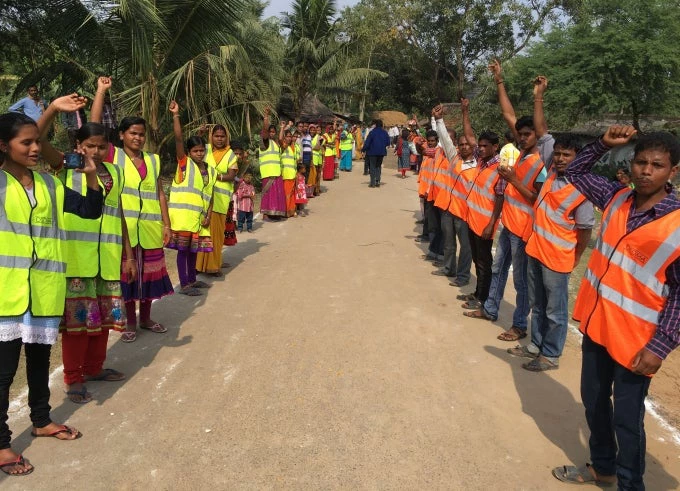
Women are seen in their traditional role of home-makers, but might their ability to take on managerial roles in disaster risk management be underestimated?
As part of the India Disaster Risk Management team, I travelled on the “Road2Resilience” bus journey along the entire coast of India. Along with the team’s mission to provide implementation support to the six coastal disaster management projects, I also focused on women’s participation in the mitigation activities of these projects.
Women’s participation in Disaster Risk Management in India has been sporadic. However, my interactions with the community - especially women - highlighted how women in coastal India are seriously taking disaster risk management into their own hands.
Among the coastal states, I found that Odisha, Andhra Pradesh and Tamil Nadu have made significant progress in women’s inclusion and participation. The sheer numbers of men, women and children that gathered wherever our bus visited was heartwarming, and gave a sense of the community ownership among the local population.
This has been one of the desired outcomes of the World Bank and Global Facility for Disaster Reduction and Recovery supported projects on National Cyclone Risk Mitigation, as well as Coastal Disaster Risk Reduction, which aims at reducing the vulnerability of coastal communities and augmenting the capability of the State and its communities to be able to plan and respond to disasters.
“Periodical consultation, suggestions and monitoring by women and community, led to change in location of women toilets in the cyclone shelter”. - Jyotsnamoyi a member of the newly constituted Cyclone Shelter Management and Maintenance in Jagatsingpur district of Odisha. This change in structural design is applied to all cyclone shelters constructed in coastal Odisha today
The coastal communities are well exposed to ‘living with risk’. Building on this experience and knowledge, the States through the coastal projects, have not only invested in improving critical infrastructure but also have reached out to the communities to show the relevance of preparedness, through continuous information sharing, mock drills and informal discussions to increase the communities awareness of what to do and where to go in the event of a disaster.
“I lost my husband and home in the night of October 1999 Super cyclone. When strong winds started again (Cyclone Phailin 2013), I shifted my family members to the nearby shelter” recalls Radha Swain, a grandmother in Nardia village of Jagatsinghpur district of Odisha; who was a part of the community mobilization activities on disaster risk management

“We charge a fee of 1000 rupees for girl’s marriages and 2000 rupees for boy’s marriages when conducted in the shelter. We use this money for shelter maintenance”, K. Laxmi, secretary of the Velugu women self-help group and member of the multi-purpose cyclone shelter committee in East Godavari district of Andhra Pradesh
In addition, each of these states have also created task forces for search, rescue and first aid attached to each shelter and have also ensured a 50% participation of women in these groups.
In the event of a cyclone, we make an announcement in the villages. We gather everyone – with attention to elderly, differently abled, women and children – in the shelter. First aid is administered to the injured ” Dhanalakshmi, Search and Rescue Task Force volunteer, Cuddalore district in Tamil Nadu.
Ensuring equal access to information and skills, strengthens women’s individual capacities and the capacity of the community to meet challenges that emerge from disasters – to be more resilient in the face of recurring hazards and to help ensure that hazards do not turn into disasters. This was well demonstrated in Odisha’s success in evacuating 1 million people, prior to the landfall of Cyclone Phailin in 2013, and ensured minimal causalities.
“ If I was not trained as part of the Search and Rescue [Village Disaster Risk Management Team], I would have thought that there are certain things that only men can do during a disaster, but not now” Padmaja, Task-force volunteer, Nagapattinam district in Tamil Nadu
As the Road2Resilience coastal mission came to an end, my interactions revealed that women are increasingly taking on the initiative to lead in managing disasters. This is certainly a departure from the traditional view of women as just home-makers. However, there are challenges in breaking traditional stereotypes and developing the capacities of women. One clear message from the journey is that by creating the space needed for including women in decision making not only builds on the women’s individual capacities to respond during disasters, but also gives an opportunity (for communities and States alike) to utilize women’s potential as sources of mitigating and managing disasters.


Join the Conversation